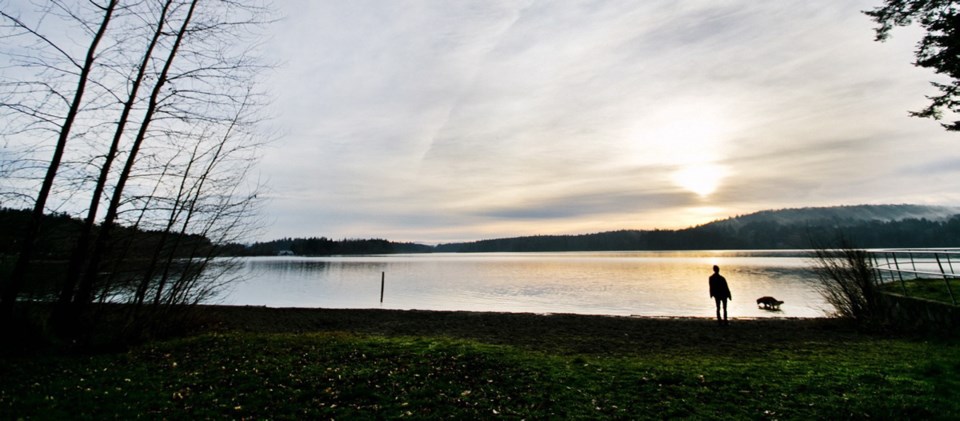The Capital Regional District has moved a step closer to dealing with frequent blue-green algae blooms that interfere with people enjoying Elk and Beaver lakes.
The CRD’s parks and environment committee agreed Wednesday that the district should ask the federal and provincial governments and other groups for grants to cover at least half the cost of remediating the lakes.
A staff report said water quality at the Elk/Beaver Lake Regional Park has been deteriorating for years due to elevated nutrient levels caused by run-off from logging, farming and development.
The nutrients trigger the blooms that pose a hazard for people, pets and wildlife if they ingest cyanotoxins in the water, the report said.
CRD staff say the most effective solution is to install a $1.4-million aeration system, which will cost about $100,000 a year to maintain and operate.
Saanich Coun. Colin Plant wanted his fellow committee members to signal that the district was prepared to fix the problem with or without help from other governments and organizations.
“Of course, I’d like to get grants,” he said. “But I don’t want to give the sense that this is not going to happen if we don’t get the grants.”
“This is our No. 1 regional park as far as visits,” he said. “The idea that one of the major features of it — the water quality — is inhibiting people from using it needs to be addressed.
“While, yes, the provincial and federal governments are partners, it’s clearly not been a priority since the ’80s when this was identified, and it’s a chance for us to show leadership. “
But other committee members balked at the idea of the CRD going it alone, arguing that senior governments and organizations should have to pick up part of the tab.
A staff report noted that the province has responsibility for the water and sediment in the lakes, while the federal government is responsible for activities on the water’s surface.
“I understand how important this project is, but it’s a massive project for us to take on, with huge financial implications,” View Royal Mayor David Screech told the committee.
“So, to me, we need to be clear that we need the senior levels of government to come to the table with us on that, and that we’re prepared to fund 50 per cent if they’re prepared to help us.”
Langford Coun. Lanny Seaton agreed.
“This is a provincial lake and a federal lake and they need to put some money toward it,” he said.
Victoria Coun. Ben Isitt, who chairs the committee, said the district can always reconsider the idea of funding the project on its own if other agencies refuse to contribute.
“I think we can advocate and, if we find that we’ve reached the end of the line in terms of securing external funds, I think we could always revisit the question of going it alone,” he said.
“But I think, at this stage, to aim for the cost-share makes the most sense.”
If the full CRD board approves the plan, the district will begin asking other governments and agencies for support. Once the money is in place, work on the aeration project could begin as early as next May, CRD documents show.



